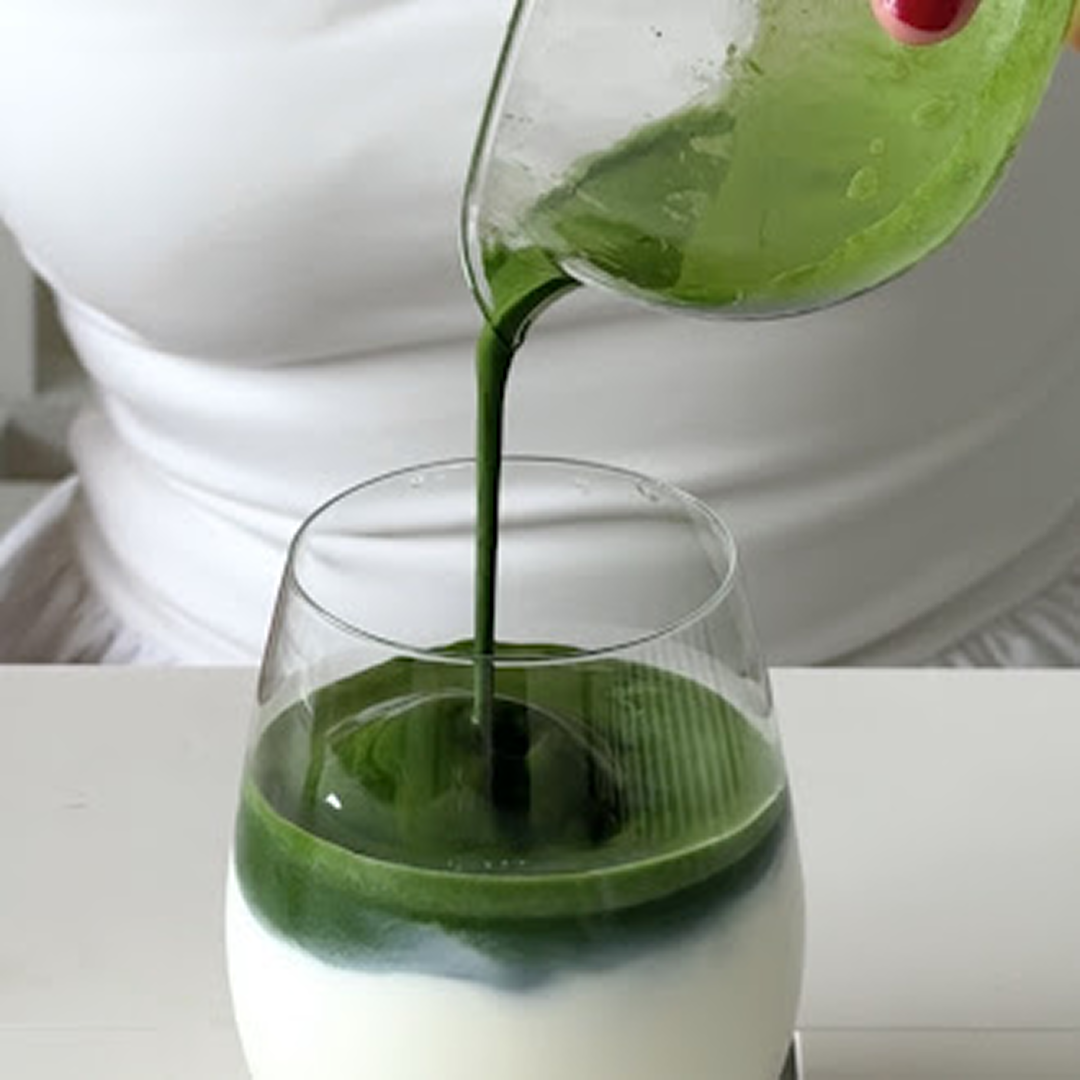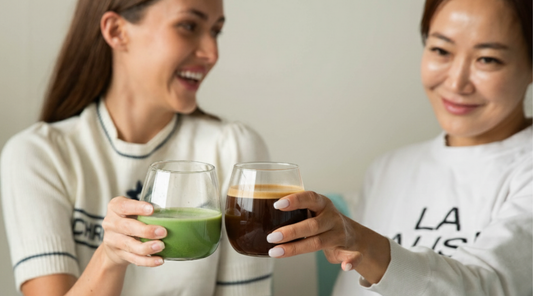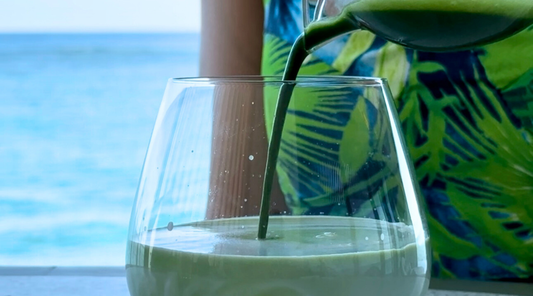
The Ultimate Guide to Understanding Matcha Grades
Share
If you're new to matcha or even if you've been sipping it for a while, you might have noticed that matcha isn't a one-size-fits-all kind of thing. Just like with coffee or wine, the quality of matcha can vary widely, and understanding these differences is key to choosing the right matcha for your needs.
In this guide, we'll break down the different grades of matcha, what sets them apart, and how to use them. We’ll also touch on aspects many other guides might overlook, giving you a more complete understanding.
What Are Matcha Grades?

Matcha grades are categories that distinguish matcha based on factors like flavour, colour, texture, and intended use. The primary grades of matcha include Ceremonial, Premium, Culinary, Ingredient, and Functional. Each grade has its own unique characteristics and is suited to different types of preparation and consumption.
1. Ceremonial Grade Matcha
Ceremonial Grade Matcha is the highest quality matcha, often reserved for traditional Japanese tea ceremonies and those who appreciate the pure, unadulterated taste of matcha.
Characteristics
Flavour: Delicate, smooth, and sweet with a strong umami presence. Ceremonial grade matcha should have minimal bitterness and a complex, refined taste that lingers on your palate.
Colour: A vibrant, bright green hue that indicates a high chlorophyll content, which is a sign of top-tier quality.
Texture: Extremely fine and silky, allowing for a smooth and frothy tea when whisked properly.
Use: Intended for traditional Japanese tea ceremonies and high-end, pure matcha drinks.
Subcategories
- Premium Ceremonial Grade: This is the crème de la crème, made from the youngest and most tender leaves harvested in the first flush of the season. It’s often used in the most formal tea ceremonies.
- Standard Ceremonial Grade: Still of high quality but may be made from slightly older leaves or those harvested later in the season. It’s perfect for daily matcha enjoyment without compromising on quality.
2. Premium Grade Matcha
Premium Grade Matcha is a step down from ceremonial but still offers a high-quality experience suitable for everyday consumption.
Characteristics
Flavour: Rich and full of umami with a good balance of sweetness. It may have slightly more astringency compared to ceremonial grades but is still pleasant to drink on its own.
Colour: Bright green, though not as vivid as the ceremonial grade.
Texture: Fine, though not as silky as ceremonial grades.
Use: Ideal for high-quality lattes, smoothies, and regular consumption. It’s a great option if you want something special without the high price tag of ceremonial.
3. Culinary Grade Matcha
Culinary Grade Matcha is designed for use in cooking and baking, where its stronger flavour can stand up to other ingredients.
Characteristics
Flavour: Stronger, more robust flavour with noticeable bitterness. The flavour is designed to stand up to other ingredients in cooking or baking.
Colour: Darker green, or sometimes even brownish-green, reflecting the more mature leaves used.
Texture: Coarser than ceremonial or premium grades.
Use: Intended for use in cooking and baking, such as in matcha-flavoured cakes, cookies, or other recipes. It’s also a popular choice for matcha lattes if you prefer a stronger matcha taste.
Subcategories
- Cooking Grade: Specifically formulated for recipes where the matcha flavour needs to be the star. It is often less expensive and more robust.
- Ingredient Grade: Another term for culinary grade, used interchangeably in some markets. It is typically used for industrial purposes or in commercial products. This grade is also favoured by food manufacturers for its strong flavour and lower cost.
4. Ingredient Grade Matcha
Ingredient Grade Matcha is similar to culinary grade but is generally used in industrial applications.
Characteristics
Flavour: Strong, with a slight bitterness. It's designed to be blended with other ingredients rather than consumed on its own.
Colour: Darker, with a brownish-green tint.
Texture: Coarser than premium and ceremonial grades.
Use: Typically used in industrial applications and commercial food products. It is designed to be mixed into recipes rather than enjoyed on its own.
5. Functional Grade Matcha
Functional Grade Matcha is primarily used in health supplements and functional foods.
Characteristics
Flavour: Can vary but is generally stronger and more robust.
Colour: Darker green.
Texture: Coarser, similar to culinary and ingredient grades.
Use: Often combined with other ingredients to boost the health benefits of a product. You might find functional grade matcha in protein powders, energy bars, or health supplements.
Choosing the Right Matcha Grade for You

Now that you know the different grades of matcha, how do you choose the right one for your needs? Here’s a quick guide:
- For Pure Tea Lovers: Go for Ceremonial Grade. Whether you’re enjoying a quiet moment of Zen or hosting a tea ceremony, this is the grade that delivers the most refined experience.
- For Everyday Use: Premium Grade is your best bet. It’s versatile enough for both drinking straight and mixing into your favourite beverages.
- For the Home Chef: Pick Culinary Grade. Whether you’re baking or blending, this matcha will give your recipes that vibrant green colour and rich flavour.
- For Commercial or Industrial Use: Ingredient Grade is what you’re looking for. It’s often more affordable and perfect for large-scale production.
- For Health Enthusiasts: Functional Grade is ideal for those looking to incorporate matcha into their health routine through supplements or functional foods.
What You Need to Know About Matcha Grades
When it comes to understanding matcha grades, there are a few key details that many guides fail to cover – yet these are precisely the insights that can make a significant difference in your matcha experience.
Many guides gloss over the nuances between these grades, particularly the subcategories within each grade. They might not tell you that even within the ceremonial grade, the quality can vary depending on the specific leaves used and the harvest time, as well as matcha cultivars.
1. Harvest Timing and Its Impact on Quality
While most discussions focus on general categories like ceremonial, premium, and culinary, few delve into how the timing of the harvest affects matcha quality.
The first harvest of the season, known as the "first flush," yields the most delicate and flavourful matcha. Leaves picked later in the season, such as in the second or third harvest, tend to be less vibrant in colour and more astringent in flavour.
Even within the ceremonial grade, matcha from the first harvest is often superior, with a smoother taste and finer texture.
For more details on matcha harvests, check out "Matcha Harvests Explained: Differences Between 1st, 2nd, and 3rd Flush."
2. Geographical Origin, Soil Quality, and Cultivars
The region where matcha is grown can significantly influence its flavour, colour, and nutritional content. For example, matcha from the Uji region of Japan is renowned for its rich flavour and vibrant green colour due to the area's ideal climate and soil conditions. However, not all brands disclose the exact origin of their matcha, which can lead to variations in quality.
Matcha from well-known regions like Uji, Yame, or Kyushu in Japan is often a sign of higher quality. Check for this information on the packaging or the brand's website to ensure you’re getting matcha from a reputable source.
Additionally, the specific cultivar of the tea plant used to produce matcha plays a crucial role in determining its flavour profile and quality. Different cultivars, such as Yabukita, Saemidori, and Okumidori, each offer unique characteristics.
For instance, Yabukita is the most commonly used cultivar, known for its balanced flavour and high yield, while Saemidori and Okumidori are prized for their vibrant colour and rich umami taste.
Some high-end matcha may blend different cultivars to achieve a desired flavour profile, offering a more complex and nuanced tea.
When selecting matcha, consider exploring different cultivars or blends to discover the flavour profile that best suits your preferences. Some brands may highlight the cultivar used, providing an extra layer of transparency and helping you choose a matcha that aligns with your taste expectations.
3. Shade-Growing Techniques
One of the secrets to high-quality matcha is the shade-growing process, which increases the chlorophyll content in the leaves, giving matcha its bright green colour and rich umami flavour. However, not all matcha is shade-grown to the same extent. Some lower-grade matcha may be exposed to more sunlight, resulting in a lighter colour and more bitter taste.
4. The Role of Stone Grinding
The traditional method of grinding matcha leaves using granite stones is crucial for producing a fine, silky powder. This slow process prevents the matcha from overheating, which can degrade its flavour and nutritional value. However, some mass-produced matcha is ground using high-speed machines, which can compromise quality.
5. Matcha Storage and Shelf Life
The freshness of matcha is crucial for maintaining its vibrant colour and flavour. Matcha can oxidise quickly if not stored properly, leading to a dull colour and a stale taste. While many guides mention that matcha should be stored in a cool, dark place, few emphasise the importance of airtight packaging and how to recognise when matcha has gone bad.
It's highly recommended to buy matcha from brands that source fresh matcha consistently (no older than 6 months).
Always store matcha in an airtight container, away from light, heat, and moisture. Matcha that has turned a dull, yellowish-green colour has likely lost its freshness. It’s best consumed within a few weeks of opening to enjoy its peak flavour.
For more details, read our article "Top Tips for Storing Matcha Right and Fresh."
Final Words
Understanding the different grades of matcha empowers you to make the best choice for your needs, whether you’re indulging in a traditional tea ceremony, mixing up a matcha latte, or experimenting in the kitchen. By knowing what to look for and what to avoid, you can truly elevate your matcha experience.
Remember, the world of matcha is vast and varied. Don’t be afraid to explore different grades and find the one that fits your lifestyle. After all, the perfect matcha is out there, waiting for you to discover it.




